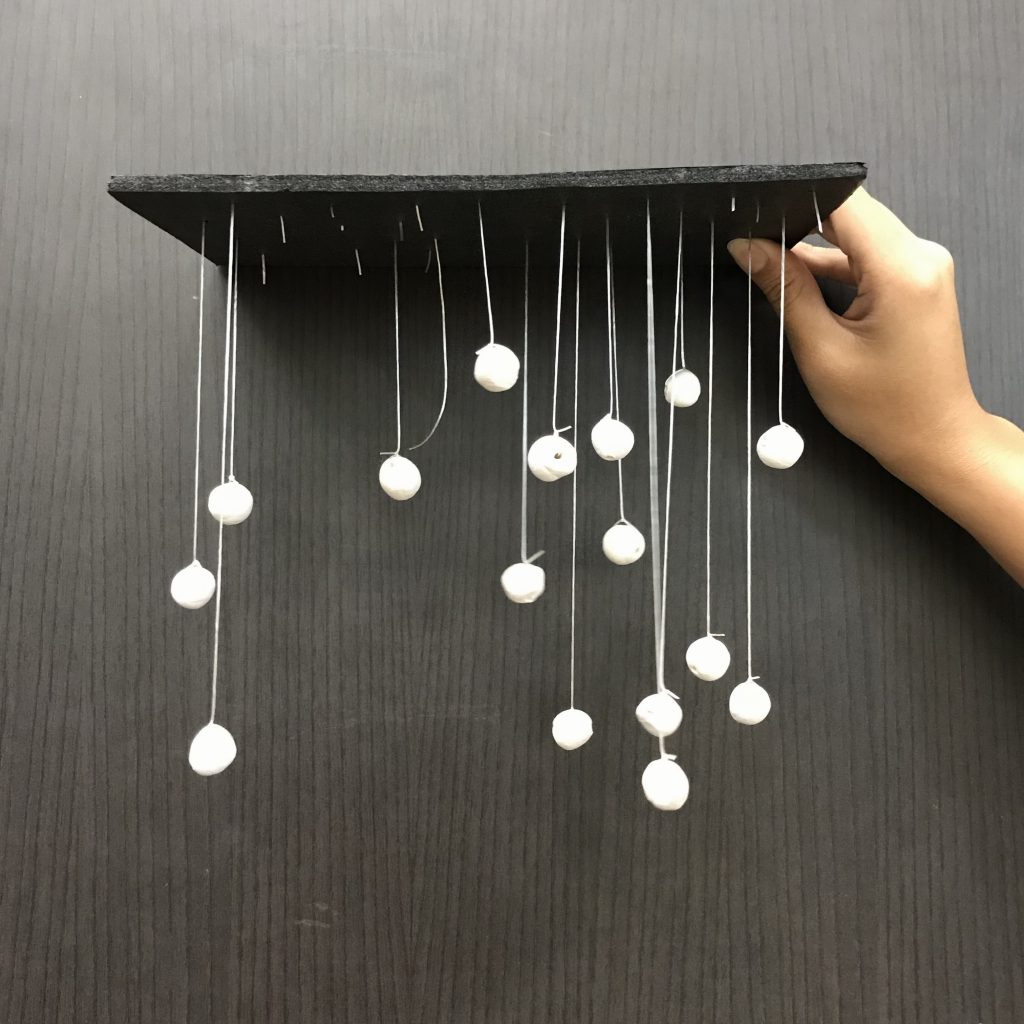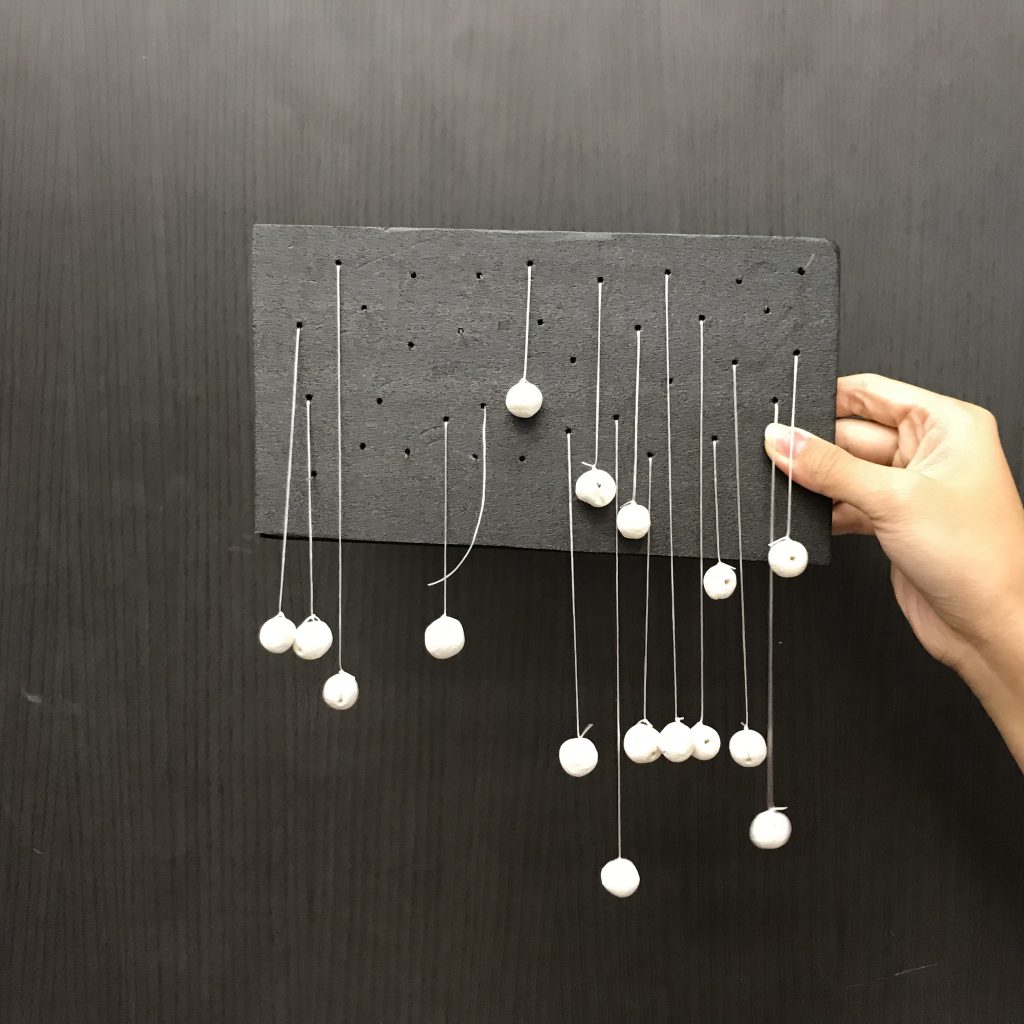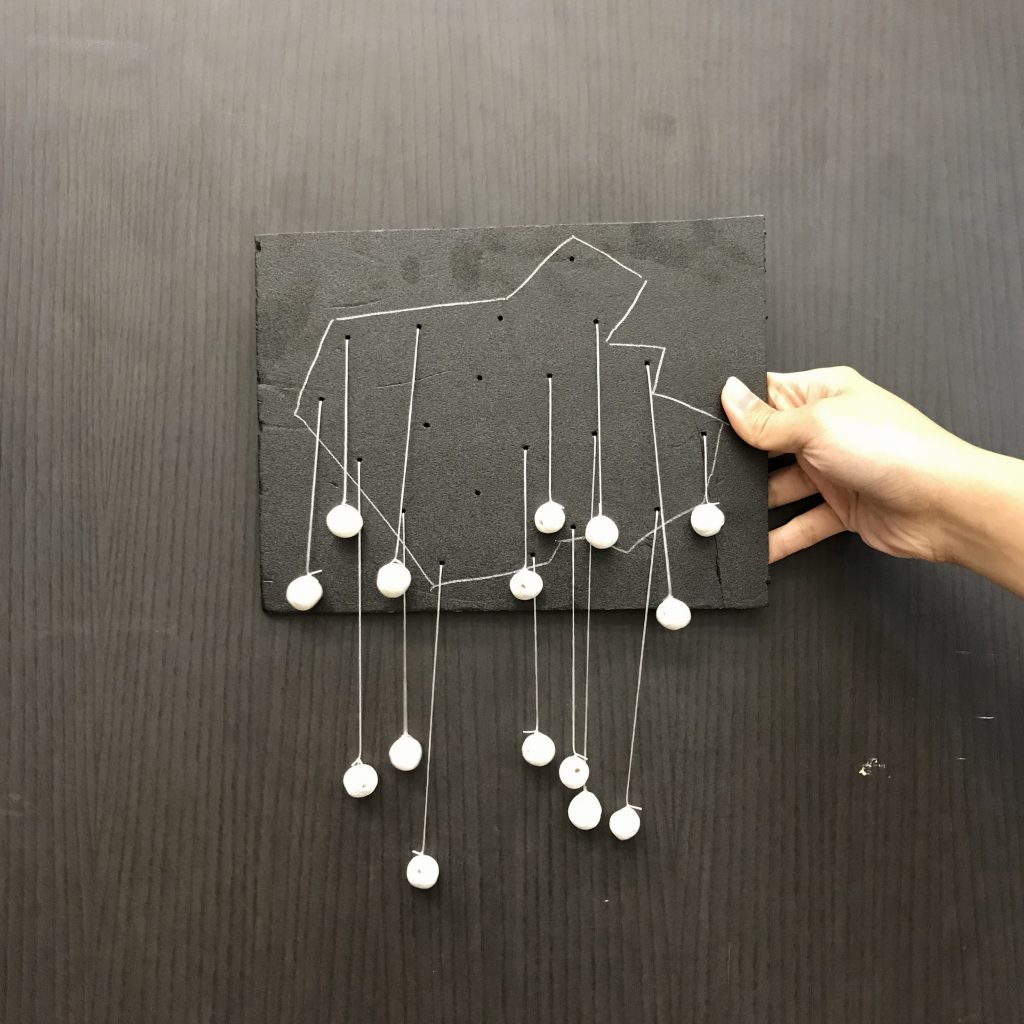https://docs.google.com/presentation/d/1lsJg7lDtcLxeUTj_O7rianIZGE1xro-pXalNQYBpNn8/edit?usp=sharing
Week 8
While we were brainstorming of methods to create sound from the previous weeks’ concepts, we had pendulums and wind chimes as an instrument.
However, we decided to look deeper into pendulums and wind chimes because we wanted the user to have the experience of touching and seeing of the entire installation.
So we laid out our ideas as such below:
Idea #1
For the first concept we intend to use pendulums suspended from the ceiling. The pendulums are of different length to represent the different individuals (students).
The layering of the pendulum could form an imagery from a certain angle to look like half of the ntu map and the other half would be reflected onto the mirror. (as illustrated below)
The students would swing the pendulums which would cause a chain reaction of the balls moving — creating the randomised movement we envisioned. By allowing the student to be in-charge of the movement of the balls it signifies how the students create their own real life relationships and daily occurrence with other students. The height of the installation would be around the head level of an average Singaporean.
From the illustration above, we thought that we could place the installation under sheltered walkways within NTU (like the first render above) or install it by the wall. But we agreed that a stand-alone installation at a certain location would be better as the users could gather around the installation for a better experience.
At this point, we are looking at placing it at an open space in front of One Stop SAC and Ultra Supplies @ North Spine (nearby the Media Wall).
Below are the mock-ups’ documentation:



Idea #2
For the second concept the installation would be placed on the ground. It would be a walk through experience for the students.
The installation space would have block like shapes with springs scattered across the whole area. The blocks with spring in them works like how the barriers at carparks function. (Or more referred to the roly poly toy, where it will spring back and forth)
Source: http://www.smoby.com/en/products/preschool/cotoons/early-learning/cotoons-roly-poly-wabappunky-asst-211311/
The blocks with spring represent students which will be scattered across the whole installation area. With the real life students walking through, the installation would trigger the movement of the ‘students’ creating the randomised pattern we intended to achieve. The ‘students’ are placed near enough to each other to allow the creation of this reaction.
–> But after considering, we have decided to go ahead with Idea #1.
We decided to come up with certain pointers that we would like our installation to have (or try to have..):
So our next step is to work on the CAD version to see the installation as a whole as well as working on the mock up.
From the in-class presentation last week, these are takeaways for us to work further and improve:
With regards to #4, we were thinking of using solar panel to power the entire project.Input: Button of the different name of areas of the school
Output: Circuit is closed with the user’s touch –> magnets activated and repel the metal balls to move in all direction towards the chosen building that was selected.
5. What are the ways to attract to get the students to come and interact with the project? Look into how museum curators place the projects etc.
From the reading of Georges Perec’s “Day to Day Data”, we came up with a concept of how we see NTU; our experience being in NTU etc.
Concept:
We use the shape of NTU as the boundary of our piece. NTU is known as an isolated space, an island, on its own. Our goal is to emphasize on this idea of NTU being a close community seen in the good light.
Students are represented as the seeds — as the seeds of the school. In a school, students are meant to study and grow, like how seeds germinate and grow. We see NTU as the environment for students to grow and flourish.
At first, the seeds are positioned at different areas of NTU, representing students coming from the different types of schools in NTU. Our idea of making the entire piece rotate is to show that the seeds eventually mix around with the others = students from other areas of NTU does not only bond among themselves but through the years, friendship is being formed throughout the school.
A short video to show our concept is here: